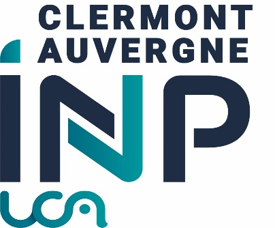Nature 492, 86 (2012)
Controlled-reflectance surfaces with film-coupled colloidal nanoantennas
Antoine Moreau, Cristian Ciracì, Jack J. Mock, Ryan T. Hill, Qiang Wang, Benjamin J. Wiley, Ashutosh Chilkoti,David R. Smith
Efficient and tunable absorption is essential for a variety of applications, such as designing controlled-emissivity surfaces for thermophotovoltaic devices, tailoring an infrared spectrum for controlled thermal dissipation and producing detector elements for imaging. Metamaterials based on metallic elements are particularly efficient as absorbing media, because both the electrical and the magnetic properties of a metamaterial can be tuned by structured design. So far, metamaterial absorbers in the infrared or visible range have been fabricated using lithographically patterned metallic structures, making them inherently difficult to produce over large areas and hence reducing their applicability. Here we demonstrate a simple method to create a metamaterial absorber by randomly adsorbing chemically synthesized silver nanocubes onto a nanoscale-thick polymer spacer layer on a gold film, making no effort to control the spatial arrangement of the cubes on the film. We show that the film-coupled nanocubes provide a reflectance spectrum that can be tailored by varying the geometry (the size of the cubes and/or the thickness of the spacer). Each nanocube is the optical analogue of a grounded patch antenna, with a nearly identical local field structure that is modified by the plasmonic response of the metal’s dielectric function, and with an anomalously large absorption efficiency that can be partly attributed to an interferometric effect. The absorptivity of large surface areas can be controlled using this method, at scales out of reach of lithographic approaches (such as electron-beam lithography) that are otherwise required to manipulate matter on the nanoscale.
Nature Physics, 8, 724 (2012)
Half-solitons in a polariton quantum fluid behave like magnetic monopoles
R. Hivet, H. Flayac, D. D. Solnyshkov, D. Tanese, T. Boulier, D. Andreoli, E. Giacobino, J. Bloch, A. Bramati, G. Malpuech & A. Amo
This experimental and theoretical work results from a collaboration between LKB and LPN in Paris and our team in Clermont. An analogue of a magnetic monopole is now observed in a condensed state of light–matter hybrid particles known as cavity polaritons. Spin-phase excitations of the polariton fluid are accelerated along the cavity under the influence of a magnetic field—just as if they were single magnetic charges. See Also about this article: Nature Physics News and Views : Magnetic monopoles: Magnetricity near the speed of light Steven T. Bramwell Nature Physics 8, 703 (2012).
Phys. Rev. Lett. 108, 037401 (2012)
Mesoscopic Self-Collimation and Slow Light in All-Positive Index Layered Photonic Crystals
Julien Arlandis, Emmanuel Centeno, Rémi Pollès, Antoine Moreau, Julien Campos, Olivier Gauthier-Lafaye, and Antoine Monmayrant
This theoretical work is the result of a collaboration between our team and the LAAS in Toulouse. We demonstrate a mesoscopic self-collimation effect in photonic crystal superlattices consisting of a periodic set of all-positive index 2D photonic crystal and homogeneous layers. We develop an electromagnetic theory showing that diffraction-free beams are observed when the curvature of the optical dispersion relation is properly compensated for. This approach allows us to combine slow-light regime together with self-collimation in photonic crystal superlattices presenting an extremely low filling ratio in air.
Phys. Rev. Lett. 108, 036405 (2012)
Backscattering Suppression in Supersonic 1D Polariton Condensates
D. Tanese, D. D. Solnyshkov, A. Amo, L. Ferrier, E. Bernet-Rollande, E. Wertz, I. Sagnes, A. Lemaître, P. Senellart, G. Malpuech, and J. Bloch
This experimental and theoretical work is the result of a collaboration between LPN in Paris and the N2 team in Clermont. We investigate the effect of disorder on the propagation of one-dimensional polariton condensates in semiconductor microcavities. We observe a strong suppression of the backscattering produced by the imperfections of the structure when increasing the condensate density. This suppression occurs in the supersonic regime and is simultaneous to the onset of parametric instabilities which enable the “hopping” of the condensate through the disorder. Our results evidence a new mechanism for the strong scattering reduction of polaritons at high speeds.
Phys. Rev. Lett. 106, 126401 (2012)
Interactions in Confined Polariton Condensates
Lydie Ferrier, Esther Wertz, Robert Johne, Dmitry D. Solnyshkov, Pascale Senellart, Isabelle Sagnes, Aristide Lemaître, Guillaume Malpuech, and Jacqueline Bloch
This experimental and theoretical work is the result of a collaboration between LPN in Paris and the N2 team in Clermont. We investigate the effect of interactions in zero-dimensional polariton condensates. The shape of the condensate wave function is shown to be modified by repulsive interactions with the reservoir of uncondensed excitons. In large micropillar cavities, when uncondensed excitons are located at the center, the condensate is ejected toward the pillar edges. The same effect results in the generation of optical traps in wire cavities. Once polariton condensates are spatially separated from the excitonic reservoir, spectral signatures of polariton-polariton interactions within the condensate are evidenced.
Phys. Rev. Lett. 109, 216404 (2012)
Propagation and Amplification Dynamics of 1D Polariton Condensates
E. Wertz, A. Amo, D. D. Solnyshkov, L. Ferrier, T. C. H. Liew, D. Sanvitto, P. Senellart, I. Sagnes, A. Lemaître, A. V. Kavokin, G. Malpuech, and J. Bloch
The dynamics of propagating polariton condensates in one-dimensional microcavities is investigated through time resolved experiments. We find a strong increase in the condensate intensity when it travels through the nonresonantly excited area. This amplification is shown to come from bosonic stimulated relaxation of reservoir excitons into the polariton condensate, allowing for the repopulation of the condensate through nonresonant pumping. Thus, we experimentally demonstrate a polariton amplifier with a large band width, opening the way towards the transport of polaritons with high densities over macroscopic distances.






